
Not So Square Science: Hexagonal Thinking
The idea of hexagonal thinking fell into my email courtesy of Cult of Pedagogy, and when I saw how WONDERFULLY effective it can be in Science to cultivate critical thinking skills, I was hooked!
Hexagonal thinking, in a nutshell, is a strategy that you can use to evaluate vocabulary and science related concepts and consider the connections between concepts and to explain the nuances in the relationships between concepts/terms.
To implement this strategy, you first want to select a set of compelling vocabulary, concepts, and examples for a particular topic/unit is developed and each term is placed on a hexagon shape. Consider key ideas of your recent class work, as well as interesting ties across disciplines and to the modern world.
Have students work in small groups to evaluate each term and establish their own pod, chains, groups and/or connections between terms. Then have the groups elaborate/explain the groups and connections that they made. Following the sorting activity, have students gallery walk to look at other team’s work; science is collaborative work!! Encourage them to bring back ideas to their own table for implementation.
There is a lot of discourse, negotiation in discussion during this work…it’s a dynamic classroom situation! Connections can be made in any direction AND on 1, 2, 3 or even six sides. All answers are correct as long as students explain their rationale. Provide students with blank hexagons too…this way they can create NEW possible connections that weren’t anticipated!
Here’s How We Did It
To implement hexagonal thinking, I start with THIS SLIDE DECK which is a step-by-step guide explaining the task and explaining what students should look for and do while sorting their hexagons.
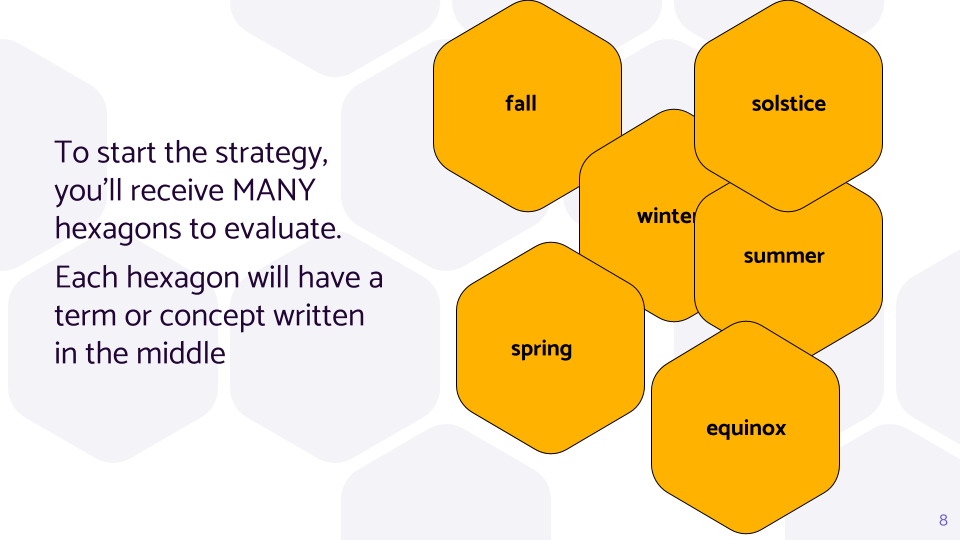
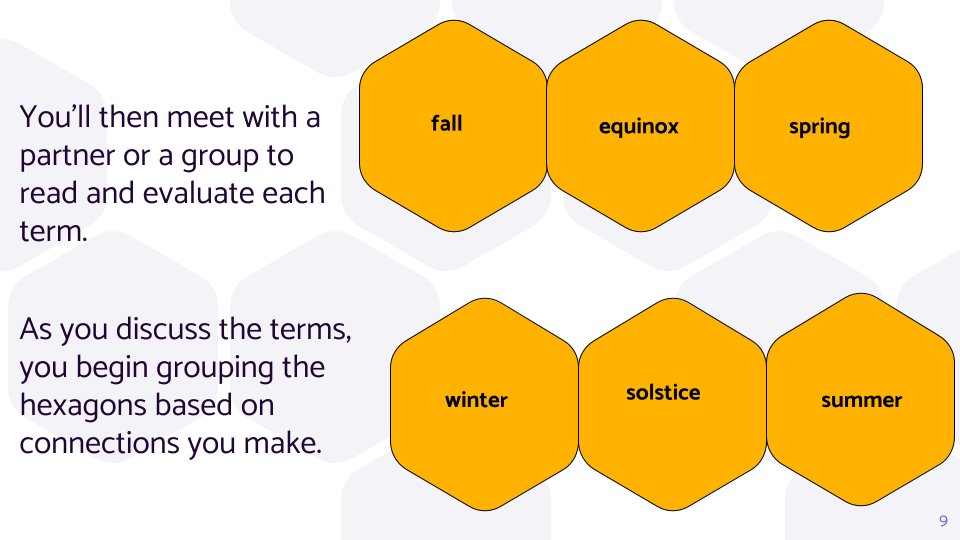
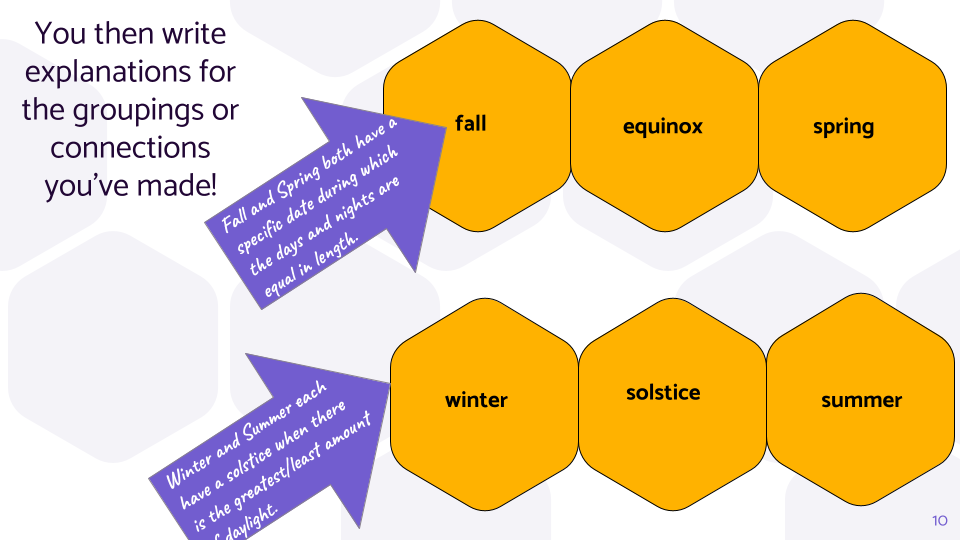
Students then get to work sorting. I have them explain their connections using post it notes.

Preparation
The thought of preparing AND CUTTING multiple sets of hexagons can be overwhelming. There are MANY different ways you can painlessly implement without spending crazy amounts of time cutting.
Option #1: Students write the terms and THEN cut them.
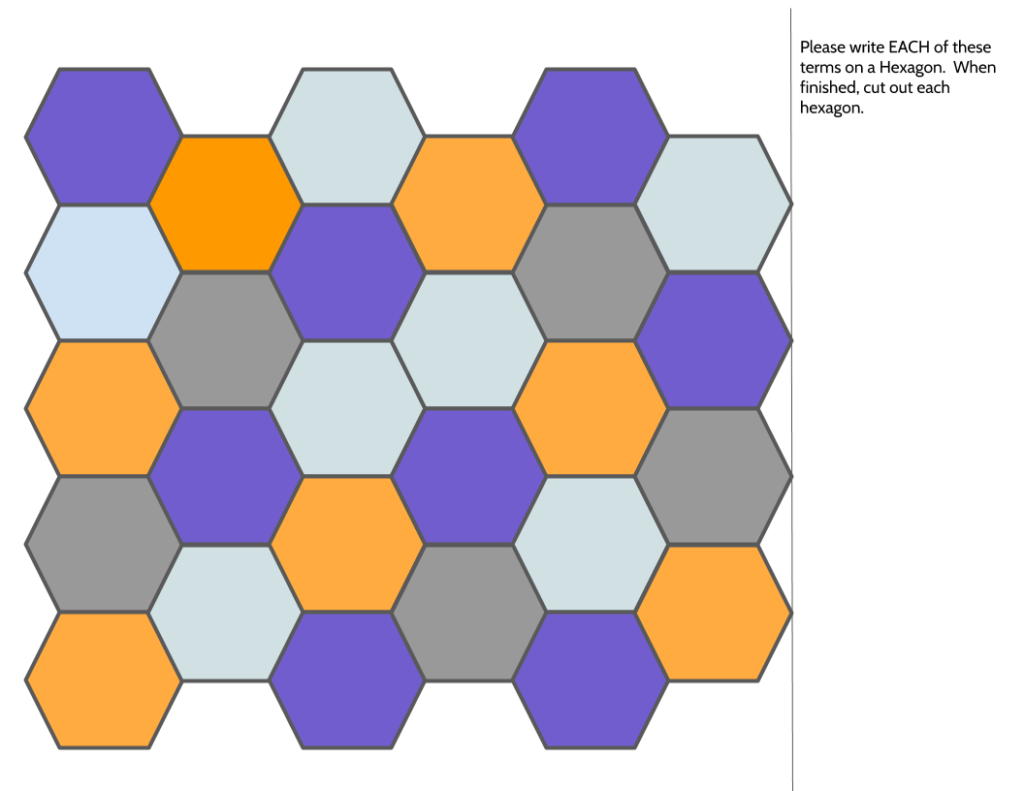
Option #2: Print terms on this pre-formatted Google Slide and then cut with Cricut or Silhouette with THIS .svg file!
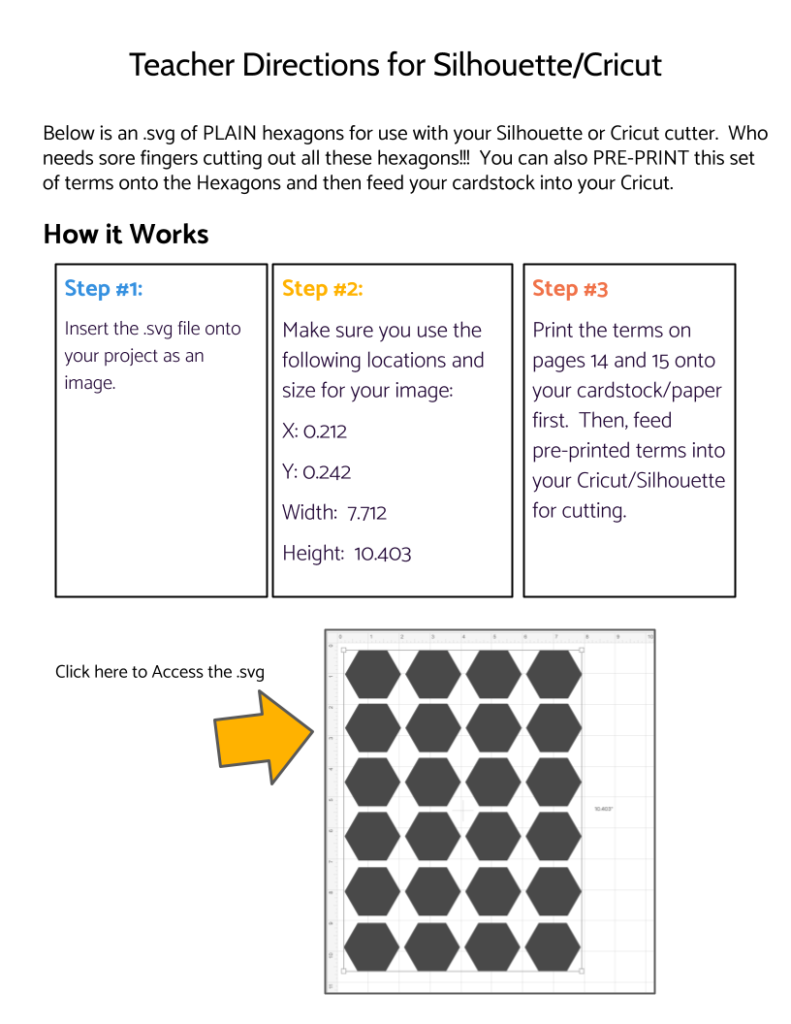
Option #3: Go DIGITAL!! Students drag and drop digital hexagons on a Google Slide Document.
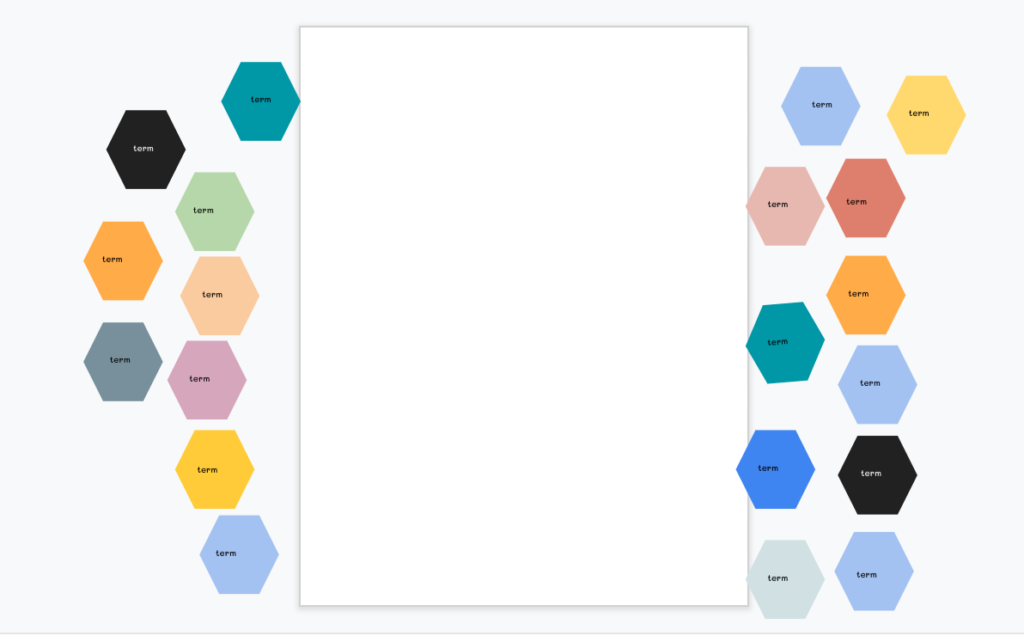
Use hexagonal thinking as a pre-assessment tool as the inherent nature of visible thinking can reveal student understanding of vocabulary and concepts prior to instruction, or use it as an assessment review to reveal misunderstandings that students might have. The collaborative nature of the activity also leverages reciprocal teaching as students support each other during the discussions and decisions while sorting.
However you choose to use it, you’ll definitely be ✨Using Your Smarticles✨
FREE ✨Smarticles!✨
Connect with ✨Your Smarticles✨ to get our latest content by email.